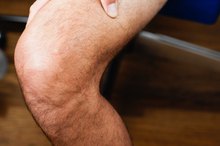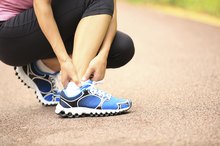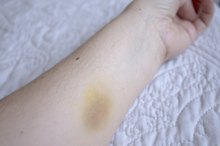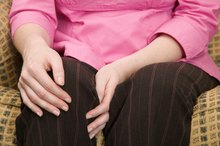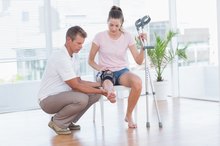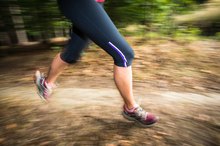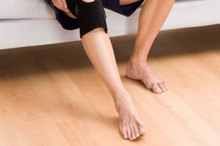Treatment for Knee Effusion
**Knee effusion, also known as "water on the knee", is a condition in which the body reacts to injury or infection by causing fluid to rush to the area, causing painful swelling 1.
If you are experiencing serious medical symptoms, seek emergency treatment immediately.
Sometimes the swelling can become enormous, and immediate treatment is necessary.
** More often, however, the swelling is nominal, and can often be treated with home remedies. This article will give you some options for treating knee effusion.
Swelling
Effusion is a gathering of fluid in the knee 1. This fluid is often the result of the body responding to an injury, such as a dislocation or trauma.
The damaged tissue reacts with swelling and becomes more inflamed, causing the joint to swell.
This can become quite dramatic and get large enough that the joint appears deformed and is unable to bend. The fluid is a combination of plasma, platelets and blood, and is often pale yellow in color. If the joint becomes grossly swollen, medical treatment will become necessary.
- Effusion is a gathering of fluid in the knee 1.
- The damaged tissue reacts with swelling and becomes more inflamed, causing the joint to swell.
Home Treatment
What Causes Fluid on Your Knee?
Learn More
For mild swelling that is caused by injury or trauma, a home remedy will often suffice. The I.C.E. treatment--(I)ce, (C)ompress, and (E)levate--is often very effective. Get off the injured knee immediately, and apply a cold compress to the joint 1. This can be a bag of ice, or even a bag of frozen vegetables. Place a cloth over the knee and apply the ice to the joint 1. Prop the leg above hip level, and then wrap the ice onto the knee 1.
Ice it for at least 20 minutes, and then apply a compression wrap to the knee and keep it elevated as much as possible 1.
Maintain this regime for at least 24 hours, icing the joint every few hours, and see if the swelling is reduced. It is important not to strain the knee and allow it to fully recover, even after the swelling has been reduced 1.
- For mild swelling that is caused by injury or trauma, a home remedy will often suffice.
- It is important not to strain the knee and allow it to fully recover, even after the swelling has been reduced 1.
Medical Treatment
Aspiration is usually the next step when a knee does not reduce on its own, or when the swelling is compromising the joint 1. This is done by a medical professional either at an emergency room or a doctor's office.
The knee is sterilized and a large syringe with a bore needle is inserted into the space between the knee joint 1.
The knee is then manipulated to extrude as much of the fluid as possible, and the fluid drained into the syringe 1. Often this fluid will be analyzed to make sure there is no infection.
- Aspiration is usually the next step when a knee does not reduce on its own, or when the swelling is compromising the joint 1.
- The knee is then manipulated to extrude as much of the fluid as possible, and the fluid drained into the syringe 1.
Corticosteroids
Home Remedy to Remove Fluid Around the Knee
Learn More
Another option that may be administered by a medical professional is the injection of a powerful corticosteroid into the freshly aspirated joint.
**This has the effect of reducing inflammation for long-term relief of swelling and stiffness.
** Results vary in patients, but most people will show significant reduction in swelling and pain, which can last anywhere from a few weeks to several months. Usually this is only used for patients who have an injury or other problem that needs to be addressed in order to provide long-term healing.
- Another option that may be administered by a medical professional is the injection of a powerful corticosteroid into the freshly aspirated joint.
- This has the effect of reducing inflammation for long-term relief of swelling and stiffness.
Rest
One of the simplest methods to help get water off the knee is to rest the joint 1. Whatever treatment is used to initially get the swelling down will be pointless if the injury is repeated or the joint is stressed before it has time to heal. Try to get weight off the knee as much as possible 1.
Use a support brace or bandage when you need to walk or use the knee 1. **Take care when turning or bending.
** Use common sense and avoid activities that could strain or twist the knee 1. By using this simple method, you can often reduce swelling in the knee joint 1.
- One of the simplest methods to help get water off the knee is to rest the joint 1.
- Use a support brace or bandage when you need to walk or use the knee 1.
Related Articles
References
- Water on the Knee
- Acute Knee Effusions
- Lespasio MJ, Piuzzi NS, Husni ME, Muschler GF, Guarino A, Mont MA. Knee Osteoarthritis: A Primer. Perm J. 2017;21:16-183. doi:10.7812/TPP/16-183
- Kiapour AM, Murray MM. Basic science of anterior cruciate ligament injury and repair. Bone Joint Res. 2014;3(2):20-31. doi:10.1302/2046-3758.32.2000241
- Doral MN, Bilge O, Huri G, Turhan E, Verdonk R. Modern treatment of meniscal tears. EFORT Open Rev. 2018;3(5):260-268. doi:10.1302/2058-5241.3.170067
- Reinking MF. CURRENT CONCEPTS IN THE TREATMENT OF PATELLAR TENDINOPATHY. Int J Sports Phys Ther. 2016;11(6):854-866.
- Petersen W, Rembitzki I, Liebau C. Patellofemoral pain in athletes. Open Access J Sports Med. 2017;8:143-154. doi:10.2147/OAJSM.S133406
- Frush TJ, Noyes FR. Baker's Cyst: Diagnostic and Surgical Considerations. Sports Health. 2015;7(4):359-65. doi:10.1177/1941738113520130
- Huang YC, Yeh WL. Endoscopic treatment of prepatellar bursitis. Int Orthop. 2011;35(3):355-8. doi:10.1007/s00264-010-1033-5
- Beals C, Flanigan D. A Review of Treatments for Iliotibial Band Syndrome in the Athletic Population. J Sports Med (Hindawi Publ Corp). 2013;2013:367169. doi:10.1155/2013/367169
- Tsai CH, Hsu CJ, Hung CH, Hsu HC. Primary traumatic patellar dislocation. J Orthop Surg Res. 2012;7:21. doi:10.1186/1749-799X-7-21
- Ragab G, Elshahaly M, Bardin T. Gout: An old disease in new perspective - A review. J Adv Res. 2017;8(5):495-511. doi:10.1016/j.jare.2017.04.008
- Lee PYF, Nixion A, Chandratreya A, Murray JM. Synovial Plica Syndrome of the Knee: A Commonly Overlooked Cause of Anterior Knee Pain. Surg J (N Y). 2017;3(1):e9-e16. doi:10.1055/s-0037-1598047
- Vaishya R, Azizi AT, Agarwal AK, Vijay V. Apophysitis of the Tibial Tuberosity (Osgood-Schlatter Disease): A Review. Cureus. 2016;8(9):e780. doi:10.7759/cureus.780
- Zanon G, Di vico G, Marullo M. Osteochondritis dissecans of the knee. Joints. 2014;2(1):29-36.
- Hindle P, Davidson E, Biant LC. Septic arthritis of the knee: the use and effect of antibiotics prior to diagnostic aspiration. Ann R Coll Surg Engl. 2012;94(5):351-5. doi:10.1308/003588412X13171221591015
- Gwinner C, Märdian S, Schwabe P, Schaser KD, Krapohl BD, Jung TM. Current concepts review: Fractures of the patella. GMS Interdiscip Plast Reconstr Surg DGPW. 2016;5:Doc01. doi:10.3205/iprs000080
- Voskuil R, Evenski AJ, Montgomery C, Emory CL. Malignant Bone Tumors of the Knee: How to Identify and Treat. J Knee Surg. 2019;32(4):305-314. doi:10.1055/s-0038-1675828
- Gupte C, St mart JP. The acute swollen knee: diagnosis and management. J R Soc Med. 2013;106(7):259-68. doi:10.1177/0141076813482831
- American Academy of Orthopedic Surgeons. Unstable Kneecap.
- Bhatia D, Bejarano T, Novo M. Current interventions in the management of knee osteoarthritis. Journal of Pharmacy & Bioallied Sciences 2013 Jan-Mar;5(1):30-38. doi:%2010.4103/0975-7406.106561
- Bronstein RD, Schaffer JC. Physical Examination of the Knee: Meniscus, Cartilage, and Patellofemoral Conditions. J Am Acad Orthop Surg. 2017 May;25(5):365-374.
- Browne K, Kurtz CA. How to perform a comprehensive examination of the knee. JAAPA. 2009 Jun;22(6):20-25.
- Hergenroeder AC, Harvey BS. (2017). Osteochondritis dissecans (OCD): Clinical manifestations and diagnosis. Bachur RG, ed. UpToDate. Waltham, MA: UpToDate Inc.

